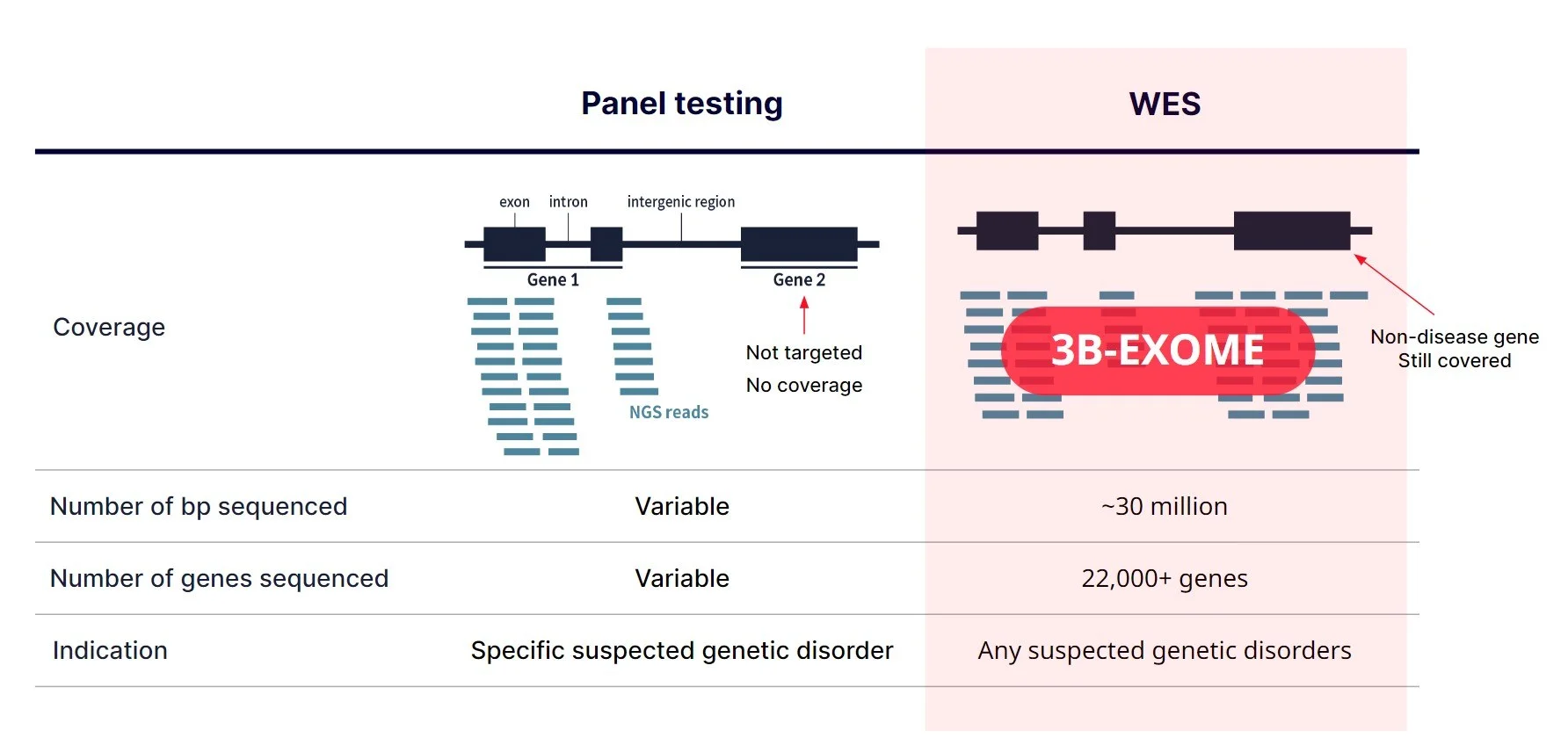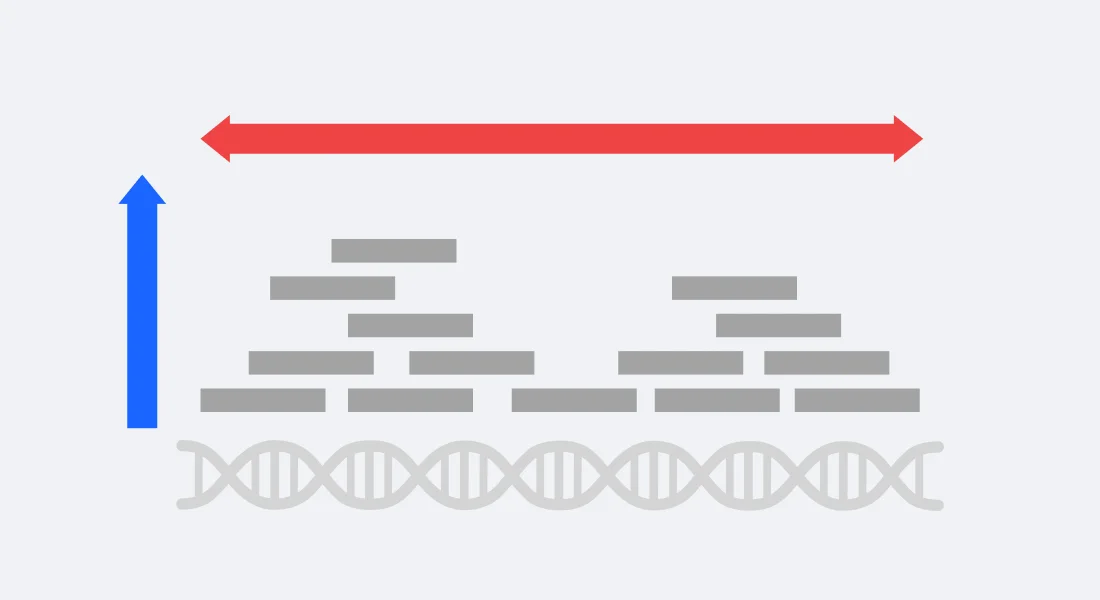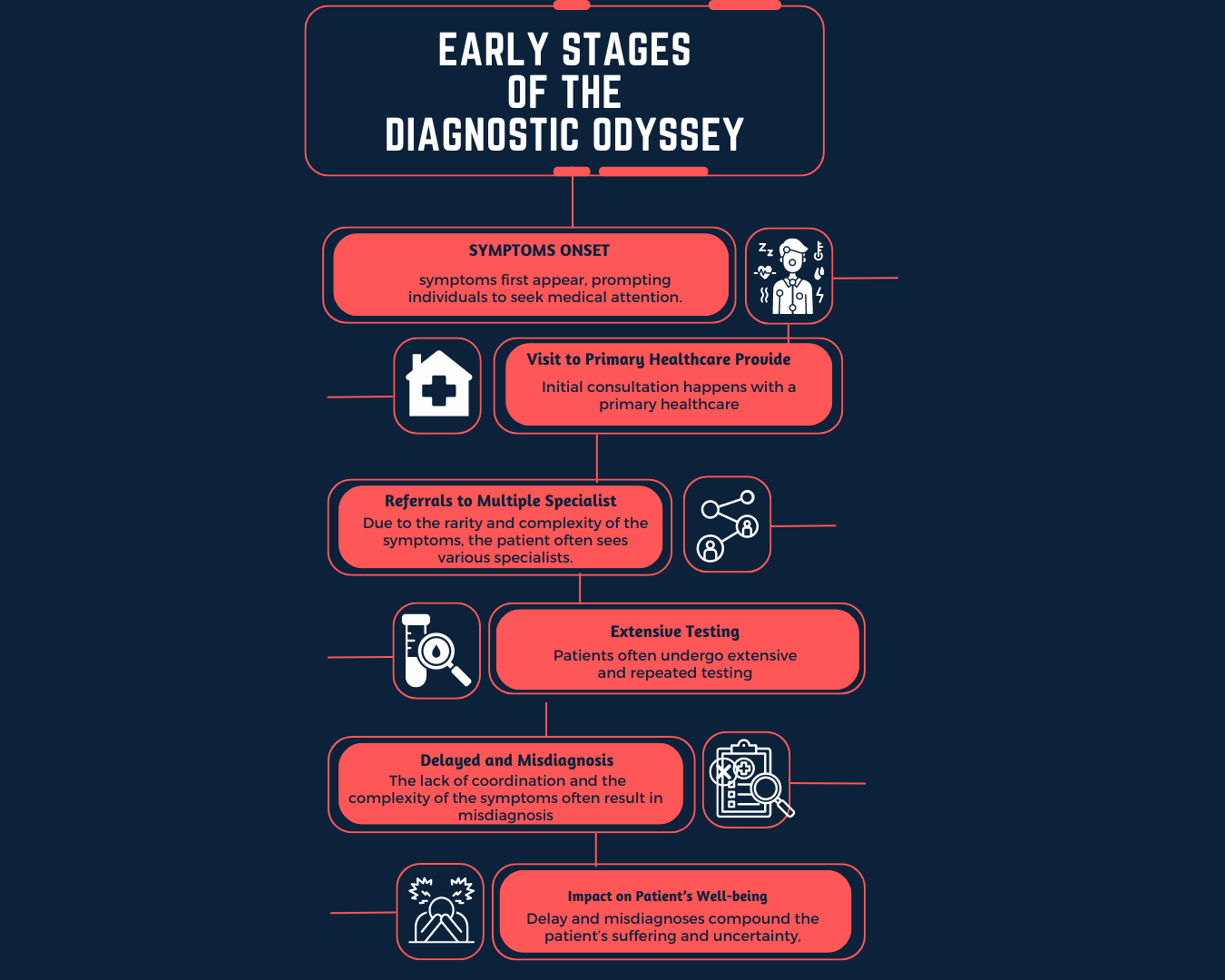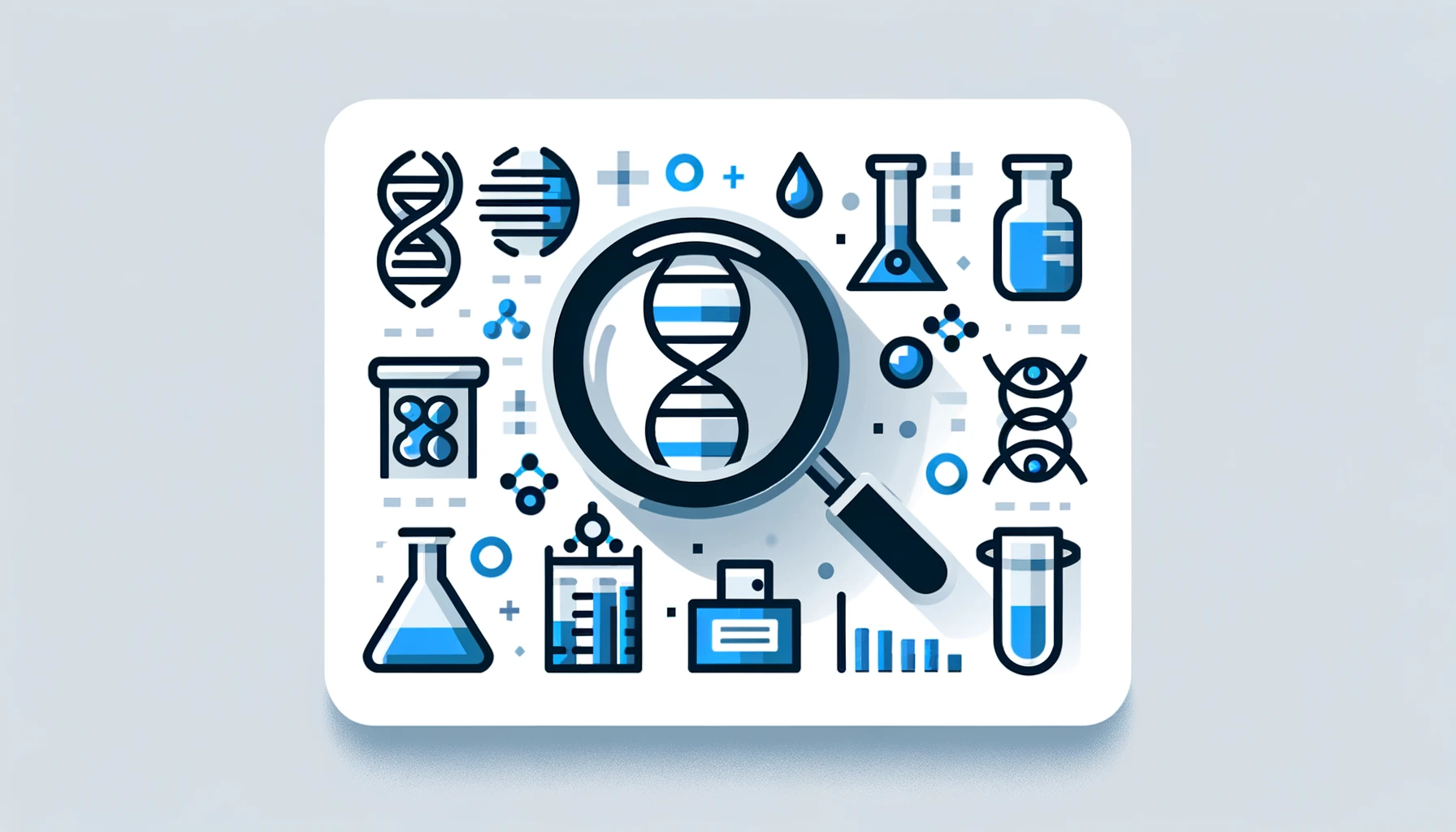Sequencing Depth vs Coverage
Physicians and researchers often consider the comparison between sequencing depth and coverage when performing genetic or genomic analyses for several reasons. While these terms are related, they provide different insights into the quality and reliability of the sequencing data. Understanding their implications helps ensure accurate and meaningful results for clinical and research purposes.
Sequencing depth and coverage are two crucial concepts in the field of genomics, especially when discussing next-generation sequencing (NGS). While the terms are often used interchangeably, they have distinct meanings.

Sequencing Depth
Sequencing depth, also known as read depth or depth of coverage, refers to the number of times a specific base (nucleotide) in the DNA is read during the sequencing process. In other words, it's the average number of times a given position in the genome is sequenced. A higher sequencing depth provides more confidence in the accuracy of the base calls at that position and helps to reduce sequencing errors and noise.
For example, if a specific nucleotide is sequenced 30 times, the sequencing depth at that position is 30x.
- Definition: Sequencing depth refers to the number of times a particular nucleotide is read during the sequencing process.
- Purpose: Higher sequencing depth increases the confidence in calling a variant at a specific location. It is particularly important when looking for rare variants or when sequencing heterogeneous samples (like tumor tissues).
- Measurement: Expressed as an average, e.g., "100x depth." This means that, on average, each nucleotide in the sequenced region was read 100 times.
Sequencing Coverage
Coverage is closely related to sequencing depth but provides a broader perspective. Coverage is the proportion or percentage of a genome that has been sequenced at a certain depth. It gives an idea of how much of the entire genome has been effectively read and is usually expressed as a multiple of the genome's size.
For example, if the entire human genome (around 3 billion base pairs) is sequenced to an average depth of 30x, the coverage would be 30x. This means that, on average, each base in the genome has been sequenced 30 times.
- Definition: Sequencing coverage pertains to the proportion of the genome (or targeted region) that has been sequenced at least once.
- Purpose: Ensures that the entirety (or as much as possible) of the target region, whether it's the whole genome, exome, or a specific panel, has been sequenced.
- Measurement: Typically expressed as a percentage. For example, "95% coverage" means that 95% of the intended region has been sequenced at least once.
- Factors Influencing Coverage: Factors such as the quality of the DNA sample, library preparation, sequencing biases, and gaps in reference sequences can impact coverage. Some regions of the genome may be hard to sequence due to high GC content, repetitive elements, or other genomic complexities.

Relationship Between Depth and Coverage
- In theory, by increasing the sequencing depth, one could also boost the coverage because more reads mean a higher likelihood of covering more regions. However, due to biases in library preparation or sequencing, certain regions may still be underrepresented or missed entirely.
- A good sequencing project aims to achieve a balance: high enough depth to detect variants confidently and comprehensive coverage to ensure the entire target region is sequenced.
Why Both Are Important
- Variant Calling: High depth ensures that when a variant (like a SNP or indel) is detected, it's not due to a sequencing error. This is crucial for clinical applications where missing a variant or falsely identifying one can have significant consequences.
- Completeness of Data: High coverage ensures that the entirety of the target region is represented in the data. If coverage is too low, there might be gaps in the sequenced data, leading to missed information.
In practical terms, when considering the sequencing of a genome or a specific genomic region, a balance needs to be struck between sequencing depth and coverage. Higher sequencing depth provides more accurate data, especially in regions of the genome that are more challenging to sequence. However, higher depth also requires more sequencing resources (time, cost), so researchers often aim for a balance based on the goals of the study and the available resources.

How to select the appropriate sequencing depth and coverage
Here are steps to help you determine the proper sequencing depth and coverage.
1. Define Your Study Objectives
- Clearly outline the purpose of your study. Are you looking for common variants, rare variants, structural variations, or specific mutations associated with a disease?
2. Consider Sample Characteristics
- The type of sample (e.g., DNA, RNA) and its quality can influence the required sequencing depth. Low-quality samples might require higher coverage.
3. Understand Genetic Variation
- Different types of genetic variations (single nucleotide variants, indels, copy number variations) may require varying depths and coverage for accurate detection.
4. Account for Rare Variants
- For rare variant detection, higher sequencing depth is important. Consider the prevalence of the variants you are interested in.
5. Consider Clinical Implications
- If your study has clinical applications, aim for a balance between cost and reliability. Clinical interpretations demand high-confidence variant calling.
6. Analyze Structural Variations
- Larger structural variations require higher coverage for accurate detection. Evaluate the size and complexity of the structural variations you're interested in.
7. Cost and Resources
- Consider your budget and available resources. Deeper sequencing and higher coverage can be more expensive.

Remember that the optimal sequencing depth and coverage can vary between different studies, even within the same field. It's crucial to carefully assess your study's requirements and make informed decisions based on a combination of factors. Collaborating with experts and considering the latest advancements in sequencing technologies can help you make the best choices for your specific research or clinical application.























